
From Page to Place – 10 Literary Landmarks to Visit for Women over 50
Many classic novels are set against the backdrop of real-world landmarks, and visiting these places can bring those beloved stories to life. Here are 10 literary landmarks that should be on the bucket list of every classic book lover.
- Pride and Prejudice by Jane Austen – Chatsworth House, Derbyshire, England –Chatsworth House is believed to have served as the inspiration for Mr. Darcy’s estate, Pemberley. The magnificent estate and its grand house are mentioned in the novel.
- Moby-Dick by Herman Melville – Nantucket, Massachusetts – The island of Nantucket is where the journey of the Pequod begins in the novel. It’s the setting for much of the early part of the story.
- The Hunchback of Notre-Dame by Victor Hugo – Notre-Dame Cathedral, Paris, France – The iconic Notre-Dame Cathedral is central to Hugo’s novel, serving as the location for much of the action and playing a significant role in the plot.
- The Great Gatsby by F. Scott Fitzgerald – The North Shore of Long Island, New York – The novel is set on Long Island, with the fictional towns of West Egg and East Egg representing different aspects of the American Dream. The grand mansions of the North Shore, such as Oheka Castle, are reflective of the opulence of the era.
- The Catcher in the Rye by J.D. Salinger – Central Park, New York City – Central Park is where Holden Caulfield spends time during his adventures in New York. It’s a recurring location in the novel.
- The Three Musketeers by Alexandre Dumas – Palais-Royal, Paris, France – The Palais-Royal in Paris is where the musketeers often meet in Dumas’ novel. It serves as a central location for their intrigues and adventures.
- Dracula by Bram Stoker – Bran Castle, Romania – While the actual connection between Bram Stoker’s novel and Bran Castle is debated, this Romanian fortress is often associated with Dracula’s castle in popular culture.
- A Tale of Two Cities by Charles Dickens – Paris and London – The novel is set in both Paris and London, with significant events taking place in landmarks like the Bastille in Paris and the Old Bailey in London.
- To Kill a Mockingbird by Harper Lee – Monroeville, Alabama – The fictional town of Maycomb, where the novel is set, is inspired by Monroeville, Lee’s hometown. The Monroe County Courthouse is often associated with the book.
- The Adventures of Sherlock Holmes by Arthur Conan Doyle – 221B Baker Street, London, England – The address of Sherlock Holmes’ famous apartment is a well-known landmark for fans of the detective series.
These classic literary works and their associated landmarks offer readers a chance to connect with the stories on a deeper level by visiting the places that inspired or were featured in the novels.
Literature has the power to transport us to different times and places, and these literary landmarks offer a unique opportunity for you to connect with the stories that have enriched your life. So, pack your bags, grab your favorite book, and go on a journey from the page to these remarkable places where literature comes to life.
How to Prepare for a Literary Landmark Journey
Going on a literary travel journey can be a truly enriching experience, allowing you to immerse yourself in the worlds of your favorite books and authors. Before you set off on your adventure, consider these essential preparations to make the most of your literary travel experience:
Choose Your Destination
Decide which literary destination(s) you want to visit. Research locations that have significance to your favorite authors or novels. Consider factors like accessibility, cultural appeal, and personal interest.
Select Your Reading List
Create a reading list of books related to the destination. Read or re-read novels set in or inspired by the place you plan to visit. This will help you appreciate the literary connections more deeply.
Research the Author and their Work
Familiarize yourself with the author’s life, writing style, and the specific work related to your destination. Understanding the context can enhance your appreciation.
Plan Your Itinerary
Create a detailed itinerary that includes literary sites, museums, bookstores, and other relevant places you want to visit. Make sure to allocate enough time at each location to fully immerse yourself.
Pack Your Books
Bring physical copies of the books you plan to read or reference during your trip. Reading in the actual setting can be a memorable experience.
Take Notes and Journal
Carry a travel journal or use a note-taking app to document your thoughts, reflections, and any interesting details you come across during your journey.
Join Literary Tours or Groups
Consider joining guided literary tours or local book clubs at your destination. These can provide valuable insights and opportunities to meet fellow book enthusiasts.
Visit Local Bookstores and Libraries
Explore local bookstores and libraries to discover books, editions, or souvenirs related to your literary interests. Engage with local bookshop owners and librarians for recommendations.
Attend Literary Events
Check if there are any literary events, book festivals, or author readings happening during your visit. Attending such events can be an excellent way to connect with the local literary scene.
Stay Open-Minded
Be open to unexpected discoveries and experiences. Literary travel is not just about following a checklist but also about embracing the serendipity of the journey.
By taking these steps, you can ensure that your literary travel journey is not only enjoyable but also deeply enriching as you connect with the books and authors that have left their mark on the destination you’re exploring.
Literary Landmarks to Put on Your List
Pride and Prejudice by Jane Austen
Chatsworth House, nestled in the picturesque countryside of Derbyshire, England, is not only a stunning architectural marvel but also a place of literary significance. Believed to have served as the inspiration for Mr. Darcy’s grand estate, Pemberley, in Jane Austen’s timeless classic Pride and Prejudice, Chatsworth House holds a special place in the hearts of Austen enthusiasts.
The magnificent estate and its opulent house are mentioned in the novel as the iconic residence of the enigmatic and beloved Mr. Darcy. As you wander through Chatsworth’s meticulously landscaped gardens, admire its regal interiors, and gaze upon its breathtaking façade, it’s easy to see why Austen chose this location as the embodiment of Pemberley’s grandeur.
Visiting Chatsworth House allows you to step into the world of Elizabeth Bennet and Mr. Darcy, and perhaps even imagine yourself strolling through the gardens as they did. The estate’s historical charm and literary connections make it a must-visit landmark for literature lovers and those seeking to relive the romance of Austen’s novels in a real-world setting.
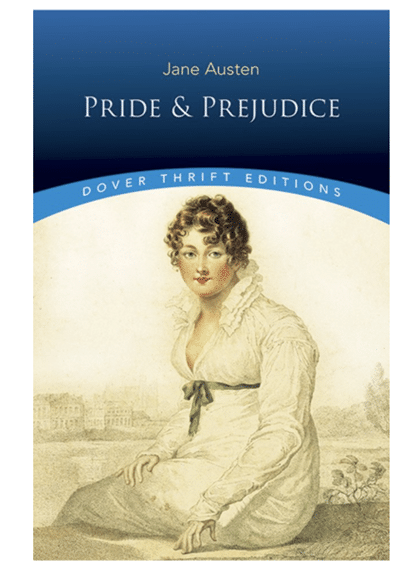
Pride and Prejudice (Dover Thrift Editions: Classic Novels)
Moby-Dick by Herman Melville
Nantucket, Massachusetts, is not just a picturesque island with sandy shores and charming coastal towns; it’s also the setting for one of the most iconic and harrowing journeys in American literature. In Herman Melville’s Moby-Dick, Nantucket plays a central role as the place where the epic voyage of the whaling ship Pequod begins.
As you set foot on Nantucket’s shores, you step into the world of Captain Ahab and his crew, embarking on a quest to hunt the elusive white whale, Moby Dick. The island’s historical whaling heritage comes to life, with its quaint streets and old buildings reminiscent of the novel’s 19th-century setting.
Exploring Nantucket, you can visit the Nantucket Whaling Museum, which houses artifacts and exhibits that transport you back to the whaling era, helping you understand the context in which Melville’s story unfolds. Whether you’re a literature enthusiast or simply seeking the charm of a coastal retreat, Nantucket offers a unique opportunity to immerse yourself in the early chapters of this literary masterpiece.

Moby-Dick or, The Whale (Penguin Classics)
The Hunchback of Notre-Dame by Victor Hugo
The iconic Notre-Dame Cathedral in Paris, France, stands as not only a stunning architectural masterpiece but also as a central character in Victor Hugo’s timeless novel, The Hunchback of Notre-Dame. The cathedral’s Gothic splendor serves as the place for much of the novel’s action and is intricately woven into the story’s fabric.
Hugo’s vivid descriptions bring Notre-Dame to life, making it almost a living entity within the narrative. It’s where the tragic love story of Esmeralda and Quasimodo unfolds, where the archdeacon Frollo’s obsession takes root, and where the fate of the characters is sealed. The novel’s exploration of themes like love, obsession, and social injustice is interwoven with the cathedral’s grandeur and mystique.
Visiting Notre-Dame Cathedral today allows you to step into Hugo’s richly depicted world. As you admire its intricate facades, climb the iconic towers, and explore its dimly lit interior, you can’t help but feel the weight of history and literature converging. The cathedral remains a timeless testament to the enduring power of both architecture and storytelling.
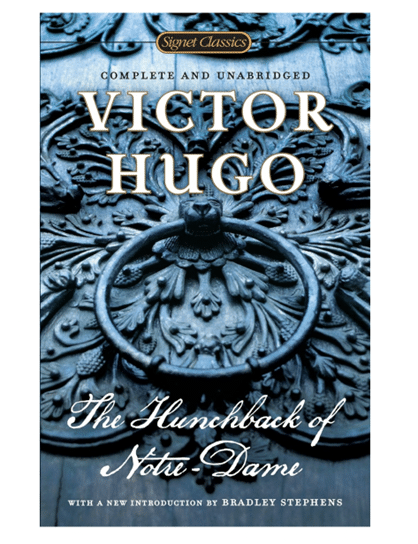
The Hunchback of Notre Dame Mass Market Paperback
The Great Gatsby by F. Scott Fitzgerald
The North Shore of Long Island, New York, offers a glimpse into the opulent world of the Jazz Age, as immortalized by F. Scott Fitzgerald in his classic novel, The Great Gatsby. This region serves as the real-world inspiration for the fictional towns of West Egg and East Egg, which are symbolic of contrasting facets of the American Dream.
As you explore this picturesque area, you’ll encounter the remnants of an era marked by extravagance, excess, and social aspirations. The grand mansions that dot the North Shore, including the famed Oheka Castle, evoke the opulence and decadence of the 1920s. These stately homes, with their lavish gardens and ornate interiors, mirror the ostentatious lifestyles of the novel’s characters, particularly Jay Gatsby.
Wandering through the lush landscapes and along the shoreline, you can envision the lavish parties, romantic entanglements, and tragic conflicts that unfolded in Fitzgerald’s narrative. The North Shore of Long Island transports you back in time, allowing you to immerse yourself in the glitz and glamour of the Roaring Twenties while contemplating the novel’s enduring themes of wealth, ambition, and the American Dream.

The Great Gatsby and Other Works (Leather-bound Classics)
The Catcher in the Rye by J.D. Salinger
Central Park, the verdant heart of New York City, takes on special significance in J.D. Salinger’s classic novel, The Catcher in the Rye. This sprawling urban oasis serves as a symbolic refuge for the novel’s protagonist, Holden Caulfield, during his turbulent adventures in the city.
Holden’s visits to Central Park provide moments of solace and introspection as he grapples with the complexities of adolescence and the adult world. Whether he’s wandering through the park’s winding paths, contemplating the ducks in the lagoon, or observing children at play, Central Park becomes a sanctuary where he can briefly escape the phoniness and pressures of society.
Exploring Central Park today, you can walk in Holden’s footsteps and gain a deeper understanding of his quest for authenticity and his yearning to preserve innocence in a world he views as tainted. The park’s serene landscapes, iconic landmarks like Bethesda Terrace and the Central Park Zoo, and the sense of respite it offers amidst the bustling cityscape all contribute to the novel’s enduring resonance and the park’s role as a literary and cultural touchstone.

The Catcher in the Rye Hardcover
The Three Musketeers by Alexandre Dumas
The Palais-Royal in Paris, France, is not only a historic and elegant palace but also a central setting for Alexandre Dumas’ swashbuckling classic, The Three Musketeers (Les Trois Mousquetaires). This iconic landmark serves as a focal point for the novel’s thrilling intrigues and the meeting place for the valiant musketeers – Athos, Porthos, Aramis, and d’Artagnan.
As you stroll through the arcades and gardens of the Palais-Royal today, you can almost hear the clinking of swords and the passionate exchanges of the novel’s characters. The palace’s rich history and architectural splendor create an immersive experience, transporting you into the world of 17th-century France.
Within the novel, the Palais-Royal becomes a hub of political plotting, duels, and romantic courtships, mirroring the tumultuous era of Cardinal Richelieu’s France. This setting adds depth and intrigue to the adventures of D’Artagnan and his companions, making it an essential stop for literature enthusiasts seeking to immerse themselves in the timeless allure of The Three Musketeers.
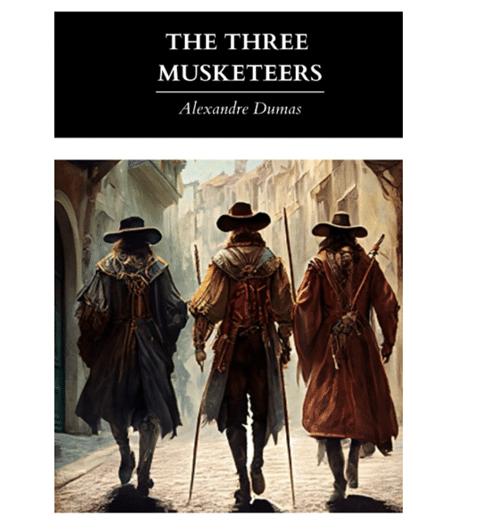
The Three Musketeers: The Original 1853 Edition (Annotated)
Dracula by Bram Stoker
Bran Castle, perched dramatically in the Carpathian Mountains of Romania, is a place steeped in legend and myth, making it a captivating destination for enthusiasts of Bram Stoker’s iconic vampire tale, Dracula. While the exact historical connection between the castle and Stoker’s novel is debated, it has become inextricably linked to the fictional Count Dracula and his eerie abode in popular culture.
Exploring Bran Castle, with its imposing stone walls and turrets, transports visitors into the dark and mysterious world of Stoker’s Dracula. The castle’s labyrinthine corridors and Gothic architecture evoke the haunting atmosphere of the novel, even if the direct literary connection is tenuous.
As you tour the castle, you’ll encounter exhibits about the history of Transylvania, the real-life Vlad the Impaler, and the evolution of vampire lore. Whether or not Bran Castle is the actual inspiration for Stoker’s fictional Dracula’s Castle, it remains an atmospheric and captivating landmark for those intrigued by the intersection of literature, history, and folklore in the enduring legend of the vampire count.
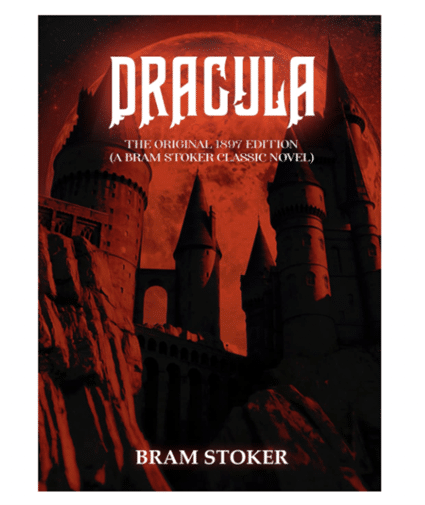
Dracula: The Original 1897 Edition
A Tale of Two Cities by Charles Dickens
Charles Dickens’ A Tale of Two Cities takes readers on a gripping journey through two iconic European cities, Paris and London, against the setting of the tumultuous French Revolution. The novel’s dual locations serve as a powerful metaphor for the stark social contrasts and the themes of resurrection and sacrifice that permeate the story.
In Paris, the novel’s opening line, “It was the best of times, it was the worst of times,” reflects the stark disparities between the aristocracy and the oppressed citizens. Key landmarks like the Bastille, the notorious prison that symbolizes tyranny, and the bustling streets of revolutionary Paris, are central to the plot’s dramatic unfolding.
Meanwhile, in London, the novel contrasts the relative stability and order of the British capital with the chaos across the English Channel. The Old Bailey, where courtroom drama plays out, and the shadowy streets that conceal secrets are emblematic of London’s role in the novel.
Visiting these cities today allows readers to walk in the footsteps of Dickens’ characters and explore the rich historical and cultural tapestry that underscores this literary masterpiece. Paris and London, as depicted in A Tale of Two Cities, remain enduring symbols of contrasting worlds and the enduring human spirit in the face of adversity.
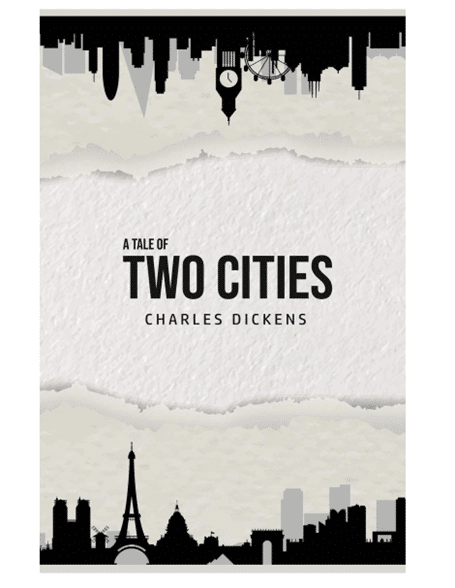
A Tale of Two Cities Hardcover
To Kill a Mockingbird by Harper Lee
Monroeville, Alabama, stands as a living testament to the literary legacy of one of America’s most beloved novels, To Kill a Mockingbird by Harper Lee. This small Southern town served as the inspiration for the fictional Maycomb, the setting for Lee’s Pulitzer Prize-winning masterpiece. The Monroe County Courthouse, with its striking neoclassical architecture, takes on a special significance in the novel.
The courthouse is where Atticus Finch, the novel’s moral compass, defends Tom Robinson, an African American man unjustly accused of a crime. This iconic landmark mirrors the courtroom scenes in the novel, where themes of racial injustice, morality, and the search for truth are explored.
Visiting Monroeville today, you can tour the Monroe County Courthouse and experience the atmosphere that inspired Harper Lee’s poignant narrative. The town also hosts the “Mockingbird Players,” a theatrical group that brings scenes from the novel to life. Monroeville’s deep connection to To Kill a Mockingbird offers a unique opportunity for literature enthusiasts to delve into the themes and characters of this timeless work while exploring the real-world place that inspired it.

The Adventures of Sherlock Holmes by Arthur Conan Doyle
221B Baker Street in London, England, is a place of pilgrimage for fans of Sir Arthur Conan Doyle’s iconic detective, Sherlock Holmes. Although 221B Baker Street is a fictional address, it has become an internationally recognized landmark due to the enduring popularity of the Sherlock Holmes stories.
The address is the location of Holmes and Dr. John Watson’s famous apartment, which serves as the scene for many of their adventures. Visitors can explore the Sherlock Holmes Museum, which is set up to resemble the interior of the fictional apartment, complete with period-appropriate furnishings and artifacts. The museum offers an immersive experience, allowing fans to step into the world of the brilliant detective.
Outside the museum, a plaque marks the spot where 221B Baker Street would have been, further cementing its status as a must-visit destination for Sherlock Holmes enthusiasts. It’s a place where fiction and reality blend, and where the enduring appeal of literature brings fans from around the world to pay homage to one of literature’s most famous detectives.

The Complete Sherlock Holmes Collection
Read HOW READING BOOKS CAN WAKE UP YOUR BRAIN AFTER 60.
Also read DO YOU NEED A WAY TO ESCAPE? TRY THESE 6 BOOKS.
Let’s Have a Conversation:
Have you read any of these literary classics? Have you visited any of these famous landmarks? Tell us about it in the comments below.







The Bridges of Madison County are all there to see and experience just like the book and movie